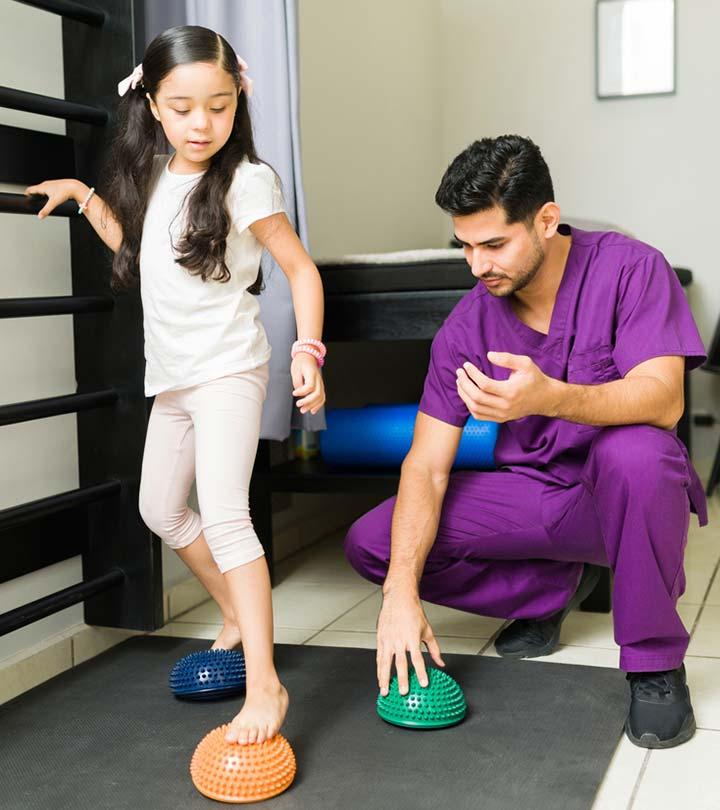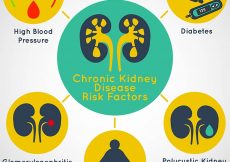Plantar fasciitis is the most common heel pain, resulting from the degenerative irritation of the plantar fascia, a tendon connecting the heel to the front of the foot. Every year, millions of individuals in the US experience plantar fasciitis (1).
The condition usually affects middle-aged people, and in children, active in sports and likely to stand longer (2). Plantar fasciitis in children could occur bilaterally (both feet) or unilaterally (one foot) (3).
Learn about plantar fasciitis in children, its causes, symptoms, risk factors, complications, diagnosis, treatment, and preventative strategies.
What Is Plantar Fasciitis In Children?
Pediatric plantar fasciitis or plantar fasciitis is an overuse syndrome that develops over time, and repeated stress is likley to cause it (3).
Children who are actively involved in sports, such as hill running, jumping, speed work, may develop the condition. Anatomical deformities, including pes cavus (high arch) and varus hindfoot (inverted position on bones in the heel), can also predispose active children to develop plantar fasciitis. Usually, plantar fasciitis is associated with calcaneal apophysitis (painful inflammation of the heel’s growth plate) in young athletes and rarely occurs by itself (3).
What Are The Risk Factors For Plantar Fasciitis?
The following conditions and problems may increase the risk of plantar fasciitis in a child (1) (4).
- Anatomical deformities, such as limited ankle dorsiflexion (foot extension at the ankle), flat feet, and high arches
- Footwear with inadequate arch support
- Females are more likely to develop plantar fasciitis than males
What Causes Plantar Fasciitis In Children?
There are various causes of plantar fasciitis in children, including (1) (2):
- Excessive pronation (inward twisting or rolling of the foot) or supination (outward)
- Inappropriate (poorly cushioned) footwear that does not provide adequate arch support or ill-fitting shoes
- Physical activity involving prolonged standing or walking, especially on hard surfaces
- Improper stretching (warming up and cooling down)
- High-impact pressure or stress activities
- Repetitive stress to the heels (5)
- Rarely, an injury to the foot
What Are The Symptoms Of Plantar Fasciitis In Children?
In the pediatric population, the signs and symptoms may vary with the type and severity of plantar fasciitis. It can include (2) (4):
- Pain and difficulty standing on the foot (5)
- Morning foot pain and stiffness that improves after walking and worsens as the day progresses (3)
- Heel pain after exercise that improves after stretching (5)
- Heel pain worsens when standing for a longer time, bearing weight, climbing stairs, running, etc.
- Tenderness near the arch of the foot
What Are The Complications Of Plantar Fasciitis In Children?
Plantar fasciitis can also lead to various risks and complications, including (1):
- Heel spurs (bony growth around the heel bone) (3)
- Chronic plantar fasciitis weakens the plantar fascia, rupturing it eventually
- Repeated strain of ligaments can also lead to tiny tears in them (2)
- Complications of lower extremities (ankle, knees, back, and hips) (6) if left untreated
- Walking posture might change
How Is Plantar Fasciitis Diagnosed?
If your child is experiencing sharp heel pain and associated symptoms suggestive of plantar fasciitis, consult a physician, a podiatrist, an orthopedist, or a sports medicine specialist (2).
Initial diagnosis includes a physical examination of the foot and heel and detailed history to know the severity and intensity of the pain and other symptoms. Sometimes, your physician may recommend additional tests if history or physical exam indicates other injuries or conditions or the patient fails to improve after a reasonable amount of time (1). These diagnostic tests may include (2) (7):
- X-ray: It is not always useful for diagnosing plantar fasciitis but may detect calcifications in the soft tissues or heel spurs.
- Ultrasound: It helps rule out soft tissue pathology in the heel.
- Magnetic resonance imaging (MRI): Determines tears, stress-related fractures, or osteochondral defects if a patient is not responding to conservative treatment after long periods.
- Bone scans: The scans help identify and evaluate plantar fasciitis (8).
- Vascular testing: Performed if the diagnosis is unclear to evaluate blood flow in the foot and lower leg.
- Blood tests: It is performed if an underlying illness is suspected.
- Neurological testing: It is performed in rare cases when the physician suspects nerve entrapment.
How Is Plantar Fasciitis In Children Treated?
The initial treatment for plantar fasciitis should be the RICE Technique which stands for (6):
- Icing the heel for a few minutes several times a day to reduce inflammation and relieve pain
- Compression is applied to the affected heel with socks or elastic bandage (Ace wrap)
- Elevation of the foot and ankle with pillows above the heart’s level
Other conservative therapies for plantar fasciitis in children may include (2) (9):
- Home exercise and stretching exercises, such as toe stretch, calf stretch, and towel stretch several times a day, especially in the morning, strengthen arch muscles and provide flexibility to the ligaments.
- Wearing footwear with good shock absorption and the right arch support
- Orthotics (heel cups or shoe inserts) and night splints
- Limiting, or if possible, stopping activities causing the heel pain, such as running
If these conservative measures fail after being followed for six weeks, more advanced or invasive techniques are considered along with the conservative approach. These techniques may include (1) (7):
- Extracorporeal shock-wave therapy is used to promote neovascularization to help the repair of degenerative tissue found in plantar fasciitis.
- A walking cast on the lower leg (2) can be used if a patient has difficulty standing. However, it is costly, and once removed, it requires rehabilitation to restore mobility and strength.
- Botulinum toxin A injection can significantly improve pain alleviation and general foot function; however, its evidence is inconclusive.
- Autologous platelet-rich plasma injection and Dex prolotherapy injection are effective in treating plantar fasciitis pain, but their results are conflicting.
- Corticosteroid injections provide symptomatic relief for the short-term (less than four weeks) but are ineffective long-term.
- Chiropractic care consists of manipulative therapy, soft tissue therapy (Graston Technique), and home rehabilitation exercises (3)
- In the case of chronic pain, surgical treatment (fasciotomy) is used as a last option.
How To Prevent Plantar Fasciitis In Children?
The strategies to prevent plantar fasciitis or help from worsening the condition may include (2) (4):
- Wearing footwear with good shock absorption and the right arch support
- Limiting or stopping activities that are causing heel pain
- Establishing a good exercise routine, including stretching exercises for Achilles tendon
- Warming up well and stretching before participating in sports and exercising.
What Is The Prognosis Of Plantar Fasciitis In Children?
Most patients with plantar fasciitis can be treated within six weeks if the conservative approach is followed after the onset of symptoms, and more than 90% should be cured by a year if non-surgical care is used. However, recovery from acute plantar fasciitis is relatively slow, and therapy and support from a physician may be required (3).
Moreover, about 5% of people may require surgical therapy to treat plantar fasciitis heel pain. However, symptoms can take weeks or months to resolve even with treatment, and the results are not consistently good. To avoid weight-bearing, some individuals may need to use a mobile device. Plantar fasciitis can keep athletes out of sports for a long time, regardless of their age, and even it heals, recurrences are common (1).
Plantar fasciitis, which is more frequent in adults, can also affect children. Sharp pain in the heel, morning foot pain, stiffness, difficulty standing, and tenderness are common signs and symptoms, and if left untreated, they can develop severe complications. Timely diagnosis and treatment can alleviate the pain and resolve symptoms sooner than later.
References:
MomJunction’s articles are written after analyzing the research works of expert authors and institutions. Our references consist of resources established by authorities in their respective fields. You can learn more about the authenticity of the information we present in our editorial policy.
The following two tabs change content below.




































